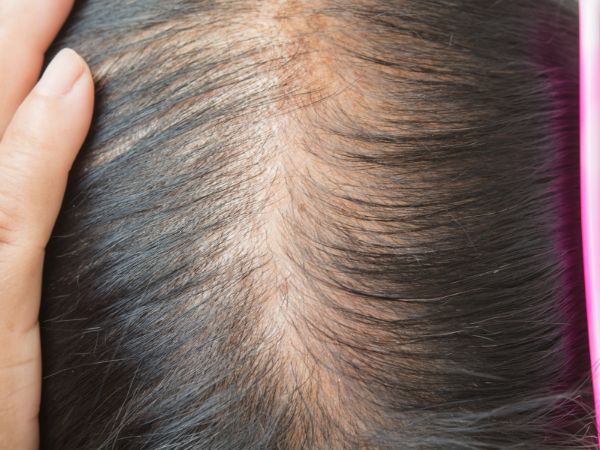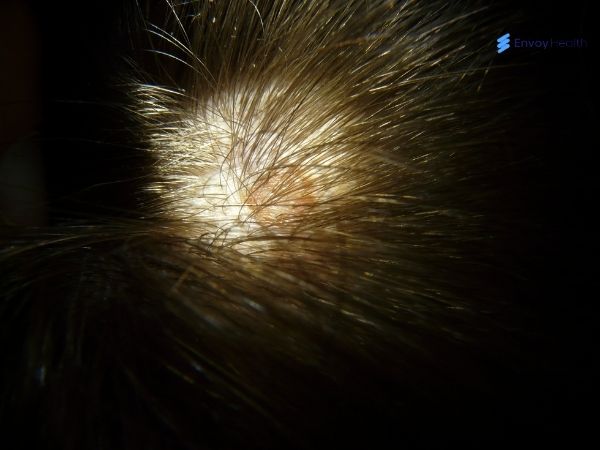Hair Transplants Gone Wrong: Here’s What You Need To Know

Prathyusha Itikarlapalli
- Content Writer

Guncel Ozturk, MD, FEBOPRAS
- Reviewed by

Table of contents
Key Takeaways
- Hair restoration procedures are generally successful and safe, providing natural-looking results that can last a lifetime. When these procedures are performed on the wrong candidates, by unqualified doctors, or incorrectly, they can result in failed hair transplants.
- Graft rejection, improper handling, or incorrect surgical technique leads to failed hair transplants. Hair transplants gone wrong result in patchy, uneven hair, unnatural hairline, scarring, necrosis, and scalp infection.
- Hair transplant surgeons suggest corrective surgeries, PRP treatment, and Minoxidil and Finasteride usage, depending on the underlying cause of failure and the extent of baldness. Tissue necrosis necessitates the surgical removal of the dead tissue to prepare the scalp for subsequent hair transplants.
Hair Transplants Gone Wrong: Does This Happen?
Around 25% of men experiencing pattern baldness begin to lose hair before they turn twenty.[1] While hair loss is a growing concern among youngsters, its prevalence is unaffected by gender. People seek hair restoration options, and the solution depends on the extent of hair loss, gender, the doctor, and the expected budget. The solution range includes non-surgical, simpler options like minoxidil and finasteride, minimally invasive PRP and exosomes, and surgical hair transplant procedures. A good hair transplant can last a lifetime, and it's quite popular due to its natural-looking results. While the procedure has a reasonable success rate, the results can rarely be compromised, leading to adverse effects. This can happen in countries with lower medical standards, inexperienced surgeons, or poorly regulated clinics where safety protocols and hygiene practices are often overlooked. Whatever the reason may be, it's crucial to understand what a failed hair transplant actually looks like.
What Do Failed Hair Transplants Look Like?
Not all hair transplants deliver the expected results. Here are some common signs of failed hair transplant procedure that may occur if it does not go as planned.
- Scarring: Scars after a hair transplant form naturally when incisions made by the surgeons heal. Thanks to the modern hair transplantation techniques, such as FUE, the scars formed are minimal. Surgeons use cutting-edge micropunches to make thin slits that heal with minimal scars. However, candidates may experience excessive scarring due to faulty technique, which can result from a lack of expertise or a reduced reliance on advanced tools.
- Unnatural hairline: The harvested grafts are implanted into the recipient area, and this should be done in an appropriate orientation to achieve a natural appearance. A successful hair transplant should naturally blend with the surrounding hair. This depends on the angle, direction, and density of the transplanted follicles and should mimic natural hair growth. A well-performed hair transplant achieves a seamless, realistic appearance only when the transplanted hair integrates smoothly with the existing strands, forming an unnatural hairline.
- Scalp infection: Hair transplants should be carried out under hygienic conditions. Unsanitary surgical conditions or a poorly hygienic scalp can allow bacteria to enter the incisions, causing scalp infection. Scalp infection after a hair transplant typically presents with excessive redness, swelling, pain, itching, fever, chills, and boils accompanied by a yellowish or greenish discharge.
- Tissue damage and necrosis: Necrosis occurs due to tissue damage under certain conditions that affect the blood supply to the scalp. Necrotic tissue following a hair transplant appears dark-colored and leathery in both the donor and recipient areas of the scalp.
- Sparse hair growth, with patches or cysts: Excessive harvesting of the donor site and uneven spacing in the recipient area can lead to thinning hair. This compromises the output, resulting in thin hair and patches that deviate from the expected results.

Why Does a Hair Transplant Go Wrong?
A well-performed hair transplant offers successful results. However, it can go wrong in certain conditions. Below, we elaborated on them:
An Inexperienced Hair Transplant Surgeon and Poor Graft Handling
The graft harvest and implantation should be carried out with utmost care. Plus, the procedure should be handled with meticulous attention to detail. Applying excessive force during harvest or exposing the graft to prolonged dry periods before implantation can harm its viability. Dried-out grafts often fail to produce effective results, resulting in patches and uneven hair density. Furthermore, surgeons should carefully implant the grafts, ensuring that they align with the surrounding hair follicles. Failing which can lead to an unnatural hairline or a deviated look that compromises the overall facial appearance.
Unhygienic Clinic and Outdated Techniques
Hair transplant procedures should be performed with strict adherence to hygiene protocols. Compromised hygiene can allow bacterial entry through incisions, leading to scalp infections, inflammation, and folliculitis. Furthermore, relying on outdated techniques can also lead to scarring due to improper healing.
Black Market Hair Transplant Clinics
Hair transplants carried out at illegally held, unregulated facilities by unqualified people (who are not doctors) can lead to complications. This can particularly happen when you choose cross-border healthcare tourism and opt for clinics abroad. While many countries boast of offering the best hair transplants abroad, it's important to conduct detailed research before treatment.
Graft Rejection
Inappropriate graft handling and implantation, causing inadequate blood supply, can cause tissue trauma. Furthermore, contaminated grafts and unsterile surgical tools can trigger inflammation. The body’s immune system may detect the grafts to be foreign tissue and launch an immune response against them. Moreover, patients with conditions of autoimmune diseases and scalp infections are at an increased risk of complications due to graft rejection. Complete graft loss, poor or patchy hair growth, scarring, and an unnatural hair texture (characterized by thin and wiry strands) are all unexpected outcomes of graft rejection.
Inappropriate Candidate Selection
Candidate selection for a hair transplant is crucial for the procedure's success. Candidates with thin hair, those in the advanced stages of balding, or those suffering from scalp infections are not ideal. They lack enough donor hair and also pose an increased risk of graft rejection and necrosis. Performing hair transplant procedures on inappropriate candidates can only result in failed outcomes.[2]
Poor Post-Procedural Care
Proper aftercare following a hair transplant procedure is essential for successful and satisfactory results. The implanted grafts should acclimate to the recipient area and start their growth cycle. Failing to do so can result in a reduced graft survival rate, delayed healing, or even dislodging. The outcomes are sparse hair density with a patchy look. Further, it can also increase the chances of infection when you fail to maintain cleanliness through gentle washing. Using too harsh or complex shampoos and conditioners can harm the microenvironment of the implanted grafts.
Hair Transplant Failure After 2 Years: Does It Happen?
A delayed hair transplant failure after 2 years is quite rare. A failure due to improper handling, infection, or lack of hygiene typically shows up within 1 year. A delayed failure can be attributed to various reasons, such as:
- Progressive hair loss due to age and genetics. Hair transplant procedures only implant new follicles into the balding spots, but do not prevent hair loss. You may need to rely on additional procedures, such as PRP, Minoxidil, and Finasteride, to slow down hair fall. Failing which causes progressive hair loss and thinning, which shows up as a delayed transplant failure.
- Poor donor hair quality, where hair transplant surgeons pick miniaturised follicles that may weaken over time, leading to thinning.
- Chronic scalp infection and dermatitis may irreversibly damage the follicles, leading to hair fall and a patchy appearance.
- Underlying hormonal imbalances or medical conditions that disturb the hormonal balance, deviating testosterone and DHT levels. These cause continued hair thinning, resulting in sparse hair density and delayed hair loss.

What Is the Hair Transplant Failure Rate?
Hair transplants are generally safe and have a reasonable success rate.[3] The failure rate is quite low for qualified and experienced hair transplant surgeons. Choosing the right surgeon can significantly reduce the risk of hair transplant failure. Even with a successful procedure, understanding the risk factors and implementing effective prevention strategies will help you achieve the best possible outcomes. We discussed this in the upcoming section.
Hair Transplant Ruined My Life: What Should I Do?
A hair transplant gone wrong is easily noticeable. You will notice sparse hair growth, unnatural appearance, redness, and a blackened scalp area with sore and inflamed tissues. To correct a bad hair transplant, consult your hair transplant surgeon for a thorough evaluation. They will identify the reason for hair transplant failure to suggest the right corrective action.
Suppose your scalp had thin hair density or an unnatural hairline, doctors suggest a hair transplant revision surgery. This repeated procedure will provide you with a natural-looking hairline and evenly distributed hair follicles. This applies only if you have enough donor hair follicles on your scalp. Don’t worry, in case you lack donor hair. Opting for PRP, exosomes, or topical and oral solutions such as Minoxidil and Finasteride can boost hair regrowth to some extent. On the other hand, doctors suggest a surgical removal of the dead tissue in cases of tissue necrosis. This will prevent the spread of infection and prepare the scalp for future hair transplants.
How Do You Prevent a Bad Hair Transplant?
Preventing a bad hair transplant is easier than trying to fix it. The hair transplants gone wrong pictures on social media platforms and public discussion forums clearly indicate what can happen when procedures are performed by unqualified surgeons or in poorly regulated clinics. To attain natural-looking, permanent, and safer results, you will need to:
- Ensure you are the right candidate for the procedure. Only candidates with adequate, healthy donor hair and free of scalp infections are suitable for hair transplants. Get a comprehensive evaluation and check your eligibility before opting for treatment.
- Don’t fall for low-cost traps. Conduct thorough research to select a reputable surgeon and clinic. While some black market clinics use marketing tactics and trendy websites to showcase their legitimacy, it's crucial to conduct meticulous research. Qualified hair transplant surgeons offer clear results by adopting the latest techniques. Check out the surgeon's qualifications, certifications, clinic credentials, and accreditations. Rely on the patient testimonials and transformation pictures to get an idea of the expected results. While positive reviews leave a good impression, negative reviews alert you to potential problems you may encounter.
- Discuss your expectations openly and honestly, and consider the pros and cons before making a decision. Additionally, clearly communicate your expectations, along with your medical and dermatological history. This will help the doctor understand your condition and enable you to set realistic expectations for your treatment.
- Ask questions, and a legitimate hair transplant surgeon will transparently address any other concerns or doubts you may have regarding the procedure, cost, and risks. In fact, they provide a detailed cost estimate, quoting prices for the procedure, anesthesia, facility charges, and post-operative medicines.
- Follow the aftercare instructions without fail. While the choice of surgeon and clinic plays a partial role in determining success, strict adherence to post-operative care is crucial. Your hair transplant surgeon will outline the aftercare measures you should follow and ensure that you adhere to them for optimal outcomes.
Final Word!
While hair restoration procedures have helped many people regain confidence, hair transplants gone wrong can lead to scarring, emotional distress, and unsatisfactory results. Most failures stem from inexperienced surgeons, poor clinic hygiene, or a lack of proper aftercare. Choosing a certified specialist and a trusted medical travel partner can make all the difference.
At Envoy Health, we connect you with top-rated, vetted clinics and qualified surgeons to ensure your procedure is safe, affordable, and successful. Sign up with Envoy Health today to take the first step toward a confident, worry-free hair restoration journey.
References
Disclaimer
The information in this article is for educational purposes only and does not replace medical advice. Always consult your doctor before starting any treatments.
Hair transplant regret rate is generally low when you choose the right hair transplant surgeon and a legitimate clinic. The chances of the procedure going wrong are low when a qualified, experienced, and skilled hair transplant surgeon performs the procedure. They conduct a thorough candidate evaluation, suggest the optimal number of grafts, and perform the procedure meticulously to achieve a natural-looking hairline.
10 years after a hair transplant, your hair appears normal, just like your natural hair. The transplanted hair follicles adopt the normal cycle of aging. While you will lose a few hair strands as part of the normal hair growth cycle, they will regrow naturally. The overall hair density feels about the same as it did before the transplant.
An unsuccessful hair transplant appears patchy, with uneven hair growth and an artificial hairline. But in case of infection or necrosis, you will notice unusual redness, inflammation with soreness, and blackish, leathery skin. In severe cases of infection, you will notice pain, red bumps, and yellowish pus oozing out.
So, we partner with the premier healthcare facilities!
Send me the list

